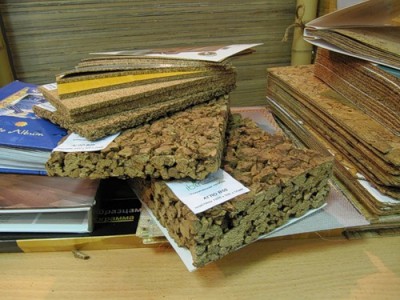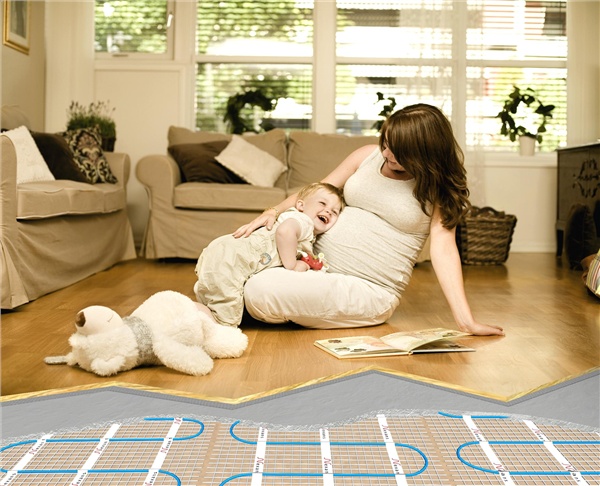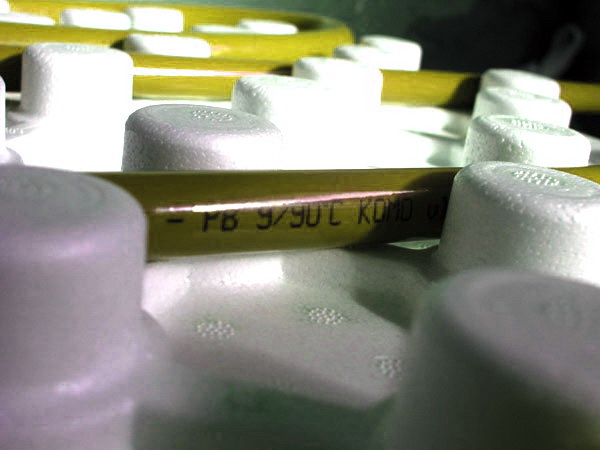Concrete floor insulation: an overview of 6 heaters and their installation technologies
Most residential areas have a concrete floor. It is practical, durable, durable. And its main drawback is that the cement floor is cold. The temperature of its surface during operation under normal conditions is within 13 ° C. As the coldest part in an apartment or house, the flooring “takes” the temperature of the surrounding air and thereby creates discomfort in the room. Therefore, in order to create optimal microclimate conditions, save energy and financial resources, the concrete floor is insulated.
Like any job, floor insulation should be done expertly. There are several common methods.
Please note: the type of building materials from which the living room is made requires the use of a certain type of cold insulator, which means that in each case the original technology is used.
Method # 1 - chipboards
It is a good insulator for concrete pavement. Chips absorb noise and retain heat. In order for the insulation to be effective, the thickness of the chip layer should not be less than 22 mm.
The waterproofing of the wet concrete base is carried out using a plastic film, on which the slabs covered by the floor are laid tightly. Or you can use them as "thick" plywood, and make the floor on the logs:
Method # 2 - raised floor with plywood flooring
A raised floor from the flooring of boards or plywood is another way that makes the concrete floor warmer, but "eats" the useful volume of the room by 22-25 cm, especially noticeable with low ceilings. The space between wood logs of the same height is filled with various heat-insulating materials, which makes it possible to use any floor covering.
Method # 3 - cork material
Cork: environmentally friendly, lightweight, warm, water-repellent and practical. She is also a good insulator. And stands out for its performance characteristics, as well as an affordable installation method. It can be laid directly on the concrete base.

Method # 4 - Isolon
Isolon as a heater is used relatively recently. The product of new technologies, having a foamed base, is indispensable in the form of a substrate for parquet or laminate. Easy to install: just roll the material on a concrete floor, stick it on and fix it with foil tape.
Method # 5 - heat insulating paint
Coating with insulating paint is an easy and affordable way of warming a previously constructed concrete floor that needs restoration. Pre-washed and dried, or cleaned from dirt and dust surfaces should be well leveled with cement mortar. All formed cracks, crevices, voids are filled by injection with liquid penoizol using a construction syringe.
The screed is applied, and after it has completely dried, the cement floor is covered with several layers of heat-insulating paint.
Prerequisite: to obtain effective thermal insulation, it is necessary that each layer of the liquid applied insulator dries for at least 24 hours!
Method # 6 - Styrofoam
The most popular method today is the insulation of a concrete floor with foam.This sound absorbing heat insulator is inexpensive, convenient to lay and process. The compressive strength directly depends on the density of the material. It is not difficult to cope with its installation, just in the process of work you only need to observe some conditions:
- Prepare the surface for insulation: clean it and tightly on top, 10 cm overlap, lay a thick film over the entire floor area, providing good waterproofing. Fix the edges with tape.
- On the film coating, foam sheets are covered tightly against the walls and to each other by dressing. Another layer of film on the foam will insulate the floor from the penetration of liquid from above.
- At the final stage of warming, with great care, so as not to tear the film, a metal frame is installed and a cement screed with a thickness of at least 5 cm is performed.
- But the greatest effect from the use of foam is observed when warming concrete floors located directly on the ground.
Note: the thickness of the foam sheets should not be less than 10 cm.
Technology of foam insulation on the ground:
- Gravel is poured directly onto the ground. The layer thickness is about 40 cm.
- This gravel pillow is well rammed, after which all remaining voids between the pebbles are covered with a 10 cm layer of sand and pressed.
- Reinforced concrete performs a rough coating, and after it dries, on average, after two weeks, a waterproofing polyethylene film is laid. At the final stage, foam insulation is performed.
If the thermal insulation is done correctly, the effect will be obvious: heat loss will decrease, the sound insulation will improve, and comfortable living conditions will be established.




5 comments